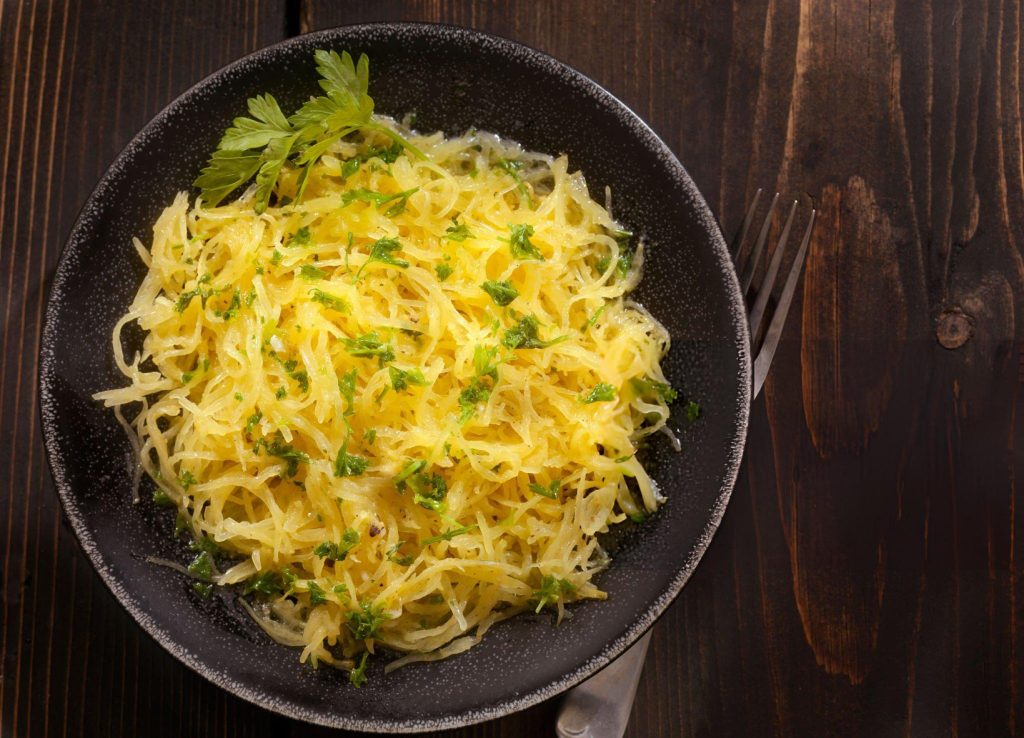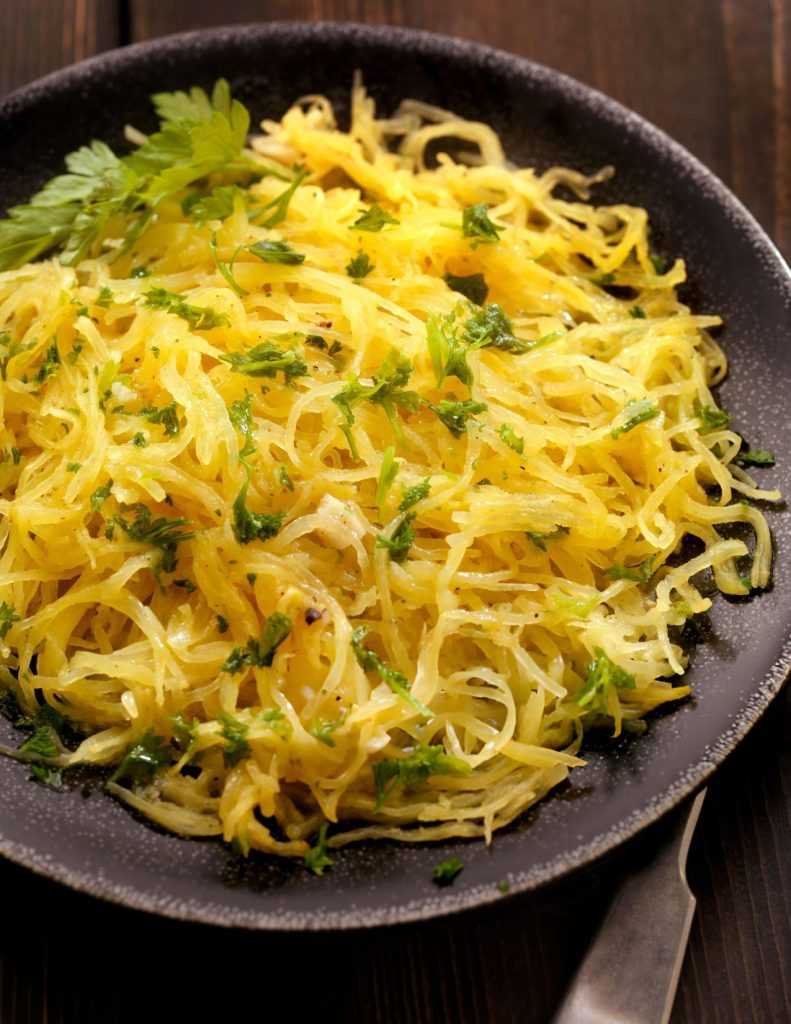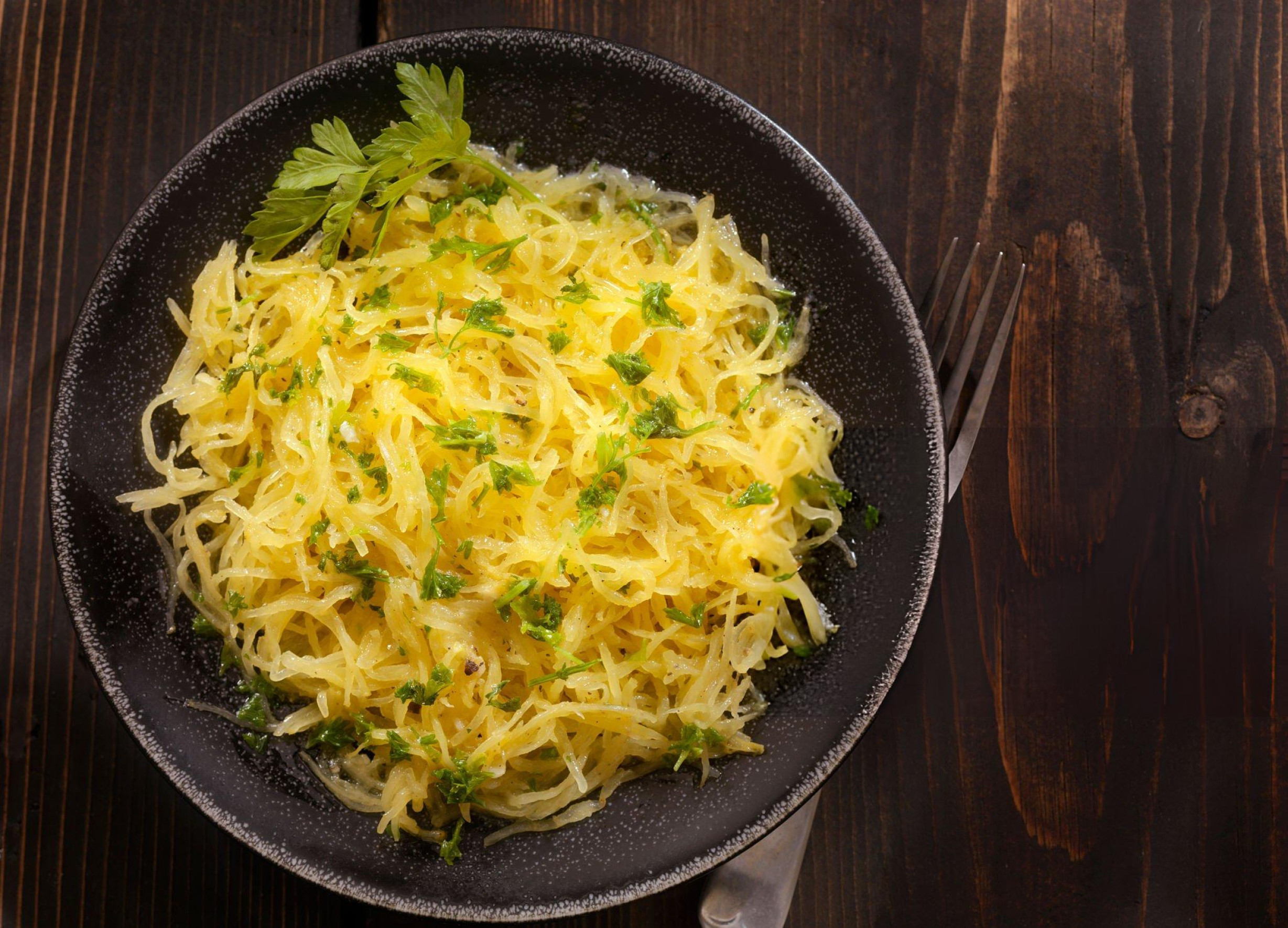Spaghetti Squash Recipe
Spaghetti squash is a delightful alternative to traditional pasta, offering a unique texture and flavor that pairs well with a variety of toppings. Preparing this low-carb, gluten-free dish is incredibly simple, making it a perfect option for quick weeknight meals. Whether you’re seeking a lighter substitute for your favorite spaghetti dishes or exploring a new vegetable-based recipe, spaghetti squash delivers a satisfying experience without the heaviness of standard noodles. This recipe will guide you through creating perfectly roasted, tender strands of spaghetti squash with minimal effort and maximum flavor.

Ingredients Breakdown
This recipe calls for just a few key ingredients that ensure the natural flavor of the squash shines through while adding richness and depth. The primary ingredient, the spaghetti squash, should weigh around 1.3 lbs, providing the perfect amount for a family meal or leftovers. The olive oil helps to enhance the caramelization of the squash as it roasts, while a light sprinkle of salt brings out its subtle sweetness. To finish the dish, 2 tablespoons of salted butter add a luxurious, velvety touch to the tender strands, making each bite even more enjoyable. If you prefer, you can substitute the butter with a dairy-free alternative or the olive oil with ghee for a nutty undertone.
Step-by-Step Instructions for Roasting Spaghetti Squash
Preparing spaghetti squash is a straightforward process, but a few techniques can elevate the results.
First, stabilize the squash by placing it on a dish towel to prevent it from slipping as you trim about 1/4 inch from both ends. This step is crucial for a smooth and even cut down the center. Once you’ve halved the squash, use a sturdy spoon to scoop out the seeds and pulp from the cavity. Don’t toss the seeds—they can be roasted later for a crunchy snack.
For roasting, the squash halves are brushed with olive oil and lightly salted to help tenderize the flesh as it cooks. Placing the squash cut side down on a parchment-lined baking sheet ensures even cooking and prevents sticking. Roast the squash for 30 to 45 minutes, depending on its size. The skin should be easily pierced with a fork, and the flesh should separate into delicate, spaghetti-like strands when scraped.
Allow the squash to cool slightly after roasting, just enough to handle comfortably. Using a fork, gently pull the strands from the edges toward the center, creating those signature “noodles” that define spaghetti squash.

Recipe Tips
Best tools to use when scraping the squash for the perfect texture:
A sturdy fork works best for separating the strands. Use a shallow dish to collect the strands without crushing them.
Time-saving tips:
Roast the squash ahead of time and store the strands in the fridge. They’ll keep well for up to three days, making dinner prep even quicker.
How to avoid overcooking or undercooking the squash:
Check the skin for tenderness. It should pierce easily, and the flesh should separate into strands without falling apart.
What to Serve With This Recipe
Spaghetti squash is a versatile dish that pairs beautifully with a wide range of sauces and toppings. A simple marinara sauce or garlic and olive oil dressing complements the subtle flavor of the squash without overpowering it. For a more indulgent option, consider tossing the squash with a creamy Alfredo sauce or pesto. If you’re looking to add protein, roasted chicken, sautéed shrimp, or crispy bacon all work wonderfully.
To complete the meal, serve spaghetti squash alongside a fresh salad or roasted vegetables. The lightness of the squash pairs well with heavier sides, like garlic bread or stuffed mushrooms, creating a well-rounded and satisfying dinner.
How to Store and Reheat Spaghetti Squash
Storing leftover spaghetti squash is easy, and it reheats beautifully without losing its texture. After roasting and scraping, store the strands in an airtight container in the refrigerator for up to three days. For longer storage, spaghetti squash can be frozen, though it’s best to freeze the strands in individual portions for easier reheating.
When reheating, it’s important to avoid overcooking the squash. Warm it gently in a skillet over medium heat with a little butter or olive oil to bring back the original tenderness without making it soggy. Alternatively, microwaving on low heat for a short burst will also do the trick.
Frequently Asked Questions
How can I make spaghetti squash more flavorful?
To boost the flavor, toss the roasted squash with garlic butter, parmesan cheese, or a drizzle of balsamic vinegar. Adding herbs like thyme or rosemary can also elevate the taste.
Can I use other types of squash for this recipe?
While spaghetti squash is unique in its strand-like texture, you can experiment with other squash varieties, though they won’t give the same noodle-like effect. Acorn or butternut squash, for instance, offer a heartier texture but can still be roasted and served similarly.
How do I know when the squash is perfectly roasted?
The squash is ready when a fork easily pierces through the skin and the flesh scrapes into long, tender strands. If the flesh is too hard, it needs more time in the oven.
This spaghetti squash recipe is a simple yet impressive dish that serves as a delicious alternative to traditional pasta. With minimal ingredients and a few straightforward steps, you can create a satisfying meal that’s perfect for any occasion. Its versatility in pairing with sauces, proteins, and side dishes makes it a go-to recipe for busy nights or a light, healthy option. So, grab your favorite toppings and get creative with this must-try spaghetti squash recipe!

Ingredients
2 Tbsp salted butter
1 spaghetti squash (approx. 1.3 lbs)
1 Tbsp olive oil
1/2 tsp salt
Instructions
Begin by positioning the oven rack in the center and preheat your oven to 400°F. Line a baking sheet with parchment paper for easy cleanup. Stabilize the spaghetti squash by placing a dish towel under it on your cutting board, then trim about 1/4 inch from both ends of the squash.
With the squash standing upright, carefully slice it lengthwise from top to bottom. Use a sturdy spoon to scoop out the seeds from the center cavity; these can be set aside for roasting later if desired.
Brush the inside of both squash halves with olive oil, and evenly sprinkle salt over them. Place the squash halves cut side down on the prepared baking sheet. Roast for 30 to 45 minutes, or until the skin is easily pierced with a fork.
Once roasted, allow the squash to cool slightly until it can be handled comfortably. Using a fork, scrape the inside of the squash, pulling in one direction to create spaghetti-like strands.
Finish by tossing the strands with butter for added flavor, and serve warm.

Spaghetti Squash Recipe
Ingredients
- 2 Tbsp salted butter
- 1 spaghetti squash approx. 1.3 lbs
- 1 Tbsp olive oil
- 1/2 tsp salt
Instructions
- Begin by positioning the oven rack in the center and preheat your oven to 400°F. Line a baking sheet with parchment paper for easy cleanup. Stabilize the spaghetti squash by placing a dish towel under it on your cutting board, then trim about 1/4 inch from both ends of the squash.
- With the squash standing upright, carefully slice it lengthwise from top to bottom. Use a sturdy spoon to scoop out the seeds from the center cavity; these can be set aside for roasting later if desired.
- Brush the inside of both squash halves with olive oil, and evenly sprinkle salt over them. Place the squash halves cut side down on the prepared baking sheet. Roast for 30 to 45 minutes, or until the skin is easily pierced with a fork.
- Once roasted, allow the squash to cool slightly until it can be handled comfortably. Using a fork, scrape the inside of the squash, pulling in one direction to create spaghetti-like strands.
- Finish by tossing the strands with butter for added flavor, and serve warm.

